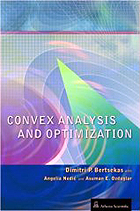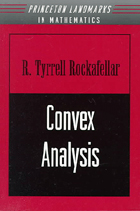 Convex Functions
Convex Functions | Convex Functions |
|
"The link between convex sets and convex functions is via the epigraph: A function is convex if and only if its epigraph is a convex set." Any convex real function f(X) has unique minimum value over any convex subset of its domain. Yet solution to some convex optimization problem is, in general, not unique; e.g., given a minimization of a convex real function f(X) over some abstracted convex set C, any optimal solution comes from a convex set of optimal solutions. But a strictly convex real function has a unique minimizer; i.e., for the optimal solution set to be a single point, it is sufficient that f(X) be a strictly convex real function and set C convex. It is customary to consider only a real function for the objective of a convex optimization problem because vector- or matrix-valued functions can introduce ambiguity into the optimal value of the objective. Quadratic real functions x^T P x + q^T x + r characterized by a symmetric positive definite matrix P are strictly convex. The vector 2-norm squared |x|^2 (Euclidean norm squared) and Frobenius norm squared |X|_F^2, for example, are strictly convex functions of their respective argument (each absolute norm is convex but not strictly convex). |







